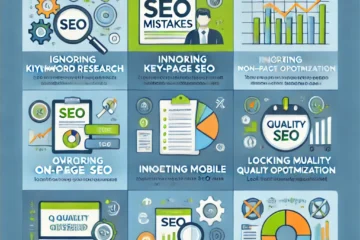What is user intent? The reason a user visits a website, is what is called user intent. The purpose of the user’s visit to a website will often determine if a goal is completed or not. If a website sells shoes, and the user’s intent is to buy shoes, there is a good chance the user will convert by calling the store or buying a pair of shoes. When user intent isn’t focused upon during keyword research, and overall website optimization, website traffic might seem high, while goal conversions are low or stagnant. The tone of a website’s content, will often steer the user’s intent, since the keywords the website ranks for, meta tags written will signal to searchbots the overall content relevancy. Not defining a clear user profile will limit a website’s ability to think like their potential customers. When content is written, keyword research won’t be using the best keywords that users inside the website’s funnel of intent will be searching with.
This is why keyword research is vital to website success and why using extra resources like user profiles can aide in crafting content that not only users are searching for. But also creating content that potential customers are searching for, so they will be more interested in calls to action and will appreciate the website’s usability. When content is crafted in just the right way, your meta titles will standout to potential customers, since that’s exactly what they’re looking for. People in general are not trying to spend hours on end researching every last website out there. They often want to find just what they are looking for and click on it in hopes it’s the one stop shop for what they need. How many times have you clicked on something you deemed ” clickbait ” only to find it wasn’t anything close to what you’re looking for, that’s what we’re trying to avoid.
Keyword Stuffing Is Bad Mmmmkay
Everyone knows a website has an agenda, whether it’s to sell a service, product or information, in some way shape or form a website is seeking something from users. It’s tempting to say exactly what your users want to hear, but if your website doesn’t offer it, don’t mention it. If you’d consider it clickbait, it’s probably not a good idea to go through with it. Often when you see a website in SERPs and it doesn’t have the information you want, it could be keyword stuffing. Keyword stuffing can be done a few ways, either by loading a list of valuable keywords on the webpage somewhere. Or it can be done without really knowing it, in the body of the content, using a keyword more than it would naturally be written can also be considered keyword stuffing. Many times website owners in an effort to rank keywords, will try an work in every possible way to talk about their covenanted keyword. So much so, the content starts to become very difficult to read and follow.
While there is no set limit to how many times you should or shouldn’t use a keyword, it’s a good rule of thumb to just read your content, often you or someone else will notice the repeating issues. This is where variations and synonyms can come in handy, if you need to keep talking about a topic often, use variations of the word and synonyms to break up the repetition. This why you make the content easier to read while increasing the likelihood of ranking more keywords that potential customers could be searching for. Also, don’t forget to use those synonyms and variations of keywords for anchor texts as well, they help tell searchbots webpage relevancy as well!
Goal Conversions Are Improved By User Optimization
When user optimization is focused on, goal conversions can often see an increase. By focusing on what potential customers are searching for, websites are more likely to be seen in SERPs by the users with the right intent. These types of users are already searching for what your website is offering, so it often is a matter of properly crafted content and clear calls to action. When user optimization is focused on, buttons are placed in just the right areas and are clearly labeled for interaction. Delivering the message based on the user’s intent can help be the deciding factor in that potential customer’s decision making process and many times adds trusts to the website. Users often notice the diligence that goes into noticing the small things, and a clear message helps a user save time, which is always appreciated.
A happy customer is also a returning customer, so nailing that 1st impression is important. Creating a user experience from the start of their journey to the end is ever increasingly important in today’s mobile driven world. User’s want an experience catered to them, while also keeping it snappy. This is where doing your user research homework comes into play, creating those user profiles to really understand who your potential customers are and what exactly they would benefit from on each step of their journey. When this is done right, goal conversions increase due to information being exactly where the user expected, improving speed and trust. What’s the saying, ” when you know what you’re doing, you make it look effortless “, that’s exactly how a website experience should be, effortless.
If you feel your website is lacking user intent, contact SEOByMichael and have an SEO Audit done. Learn where issues might be preventing users from understanding their next step!


